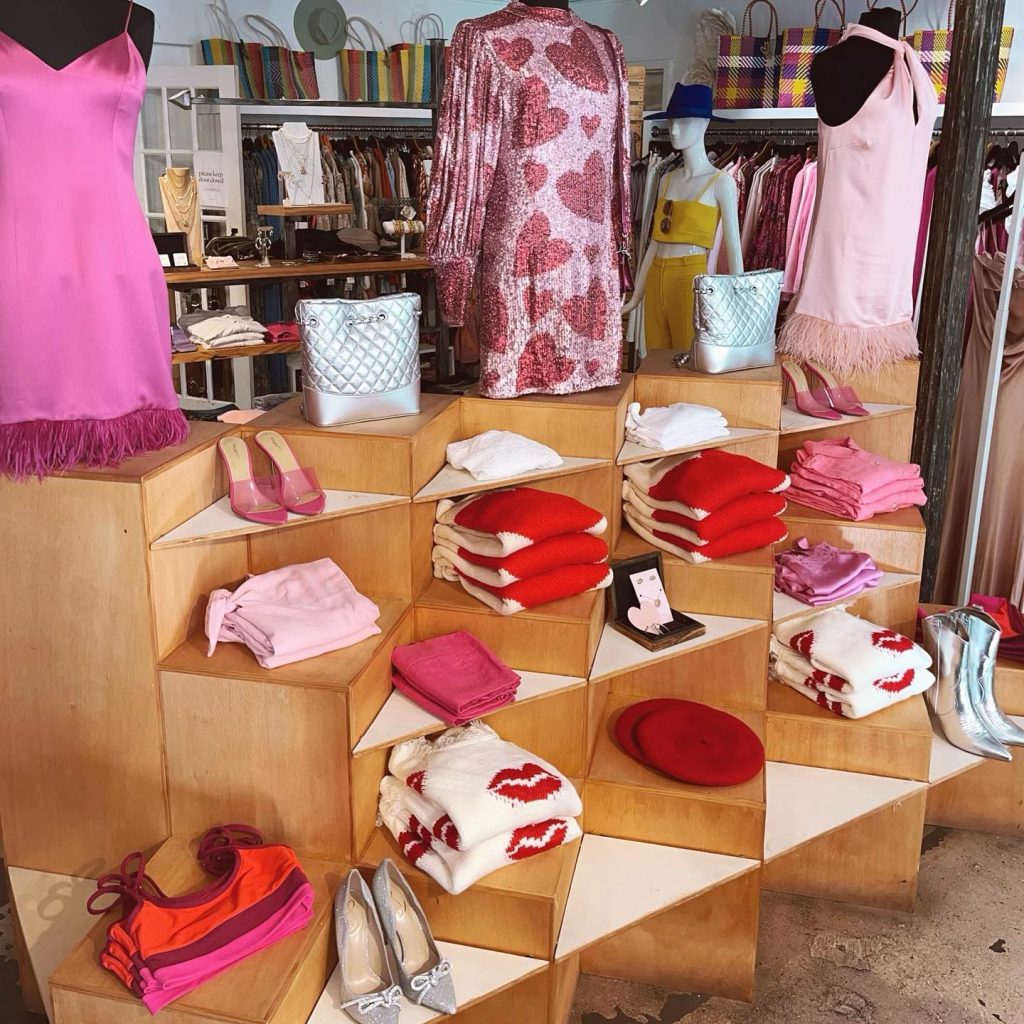A Novice's Overview to Browsing the Boutique Fashion Scene
A Novice's Overview to Browsing the Boutique Fashion Scene
Blog Article
Discovering the Development and Influence of Clothes on Modern Style Trends
The evolution of clothing has dramatically influenced contemporary style patterns, combining historical criteria with cutting-edge developments. Legendary figures like Coco Chanel and Yves Saint Laurent revolutionized the fashion market by presenting ideas that prioritize comfort and access, which continue to reverberate today.
Historical Style Influencers
In the tapestry of fashion background, particular figures have actually left an enduring mark, forming the trends and styles that define whole periods. Coco Chanel, an innovative developer, redefined females's fashion by presenting comfortable, stylish apparel that departed from limiting bodices. Her iconic Chanel suit and little black dress have actually ended up being timeless staples in wardrobes worldwide. Christian Dior's post-war "New Look" in 1947, with its celebration of womanhood via complete skirts and cinched midsections, noted a return to luxury and has continued to affect developers.
Elsa Schiaparelli is an additional critical number, renowned for her avant-garde styles that incorporated surrealist art, collaborating with Salvador Dalí to develop whimsical items that challenged conventional looks. Her innovative use shade and vibrant patterns resounds in contemporary style. Yves Saint Laurent, at the same time, democratized haute couture with prêt-à-porter collections, bringing path styles to the masses and setting a precedent for contemporary ready-to-wear lines.
These dreamers, to name a few, not only changed fashion in their times but likewise established sustaining fads that resonate in today's fashion market, giving a foundation upon which modern designers continue to introduce and develop. Their heritages underscore the significance of imagination and daring in vogue's ever-evolving story.
Technical Innovations in Style
Among the vibrant landscape of the apparel industry, technical advancements stand at the forefront of innovation, reshaping how designers produce and consumers engage with fashion. The integration of 3D printing has revolutionized design procedures, making it possible for developers to trying out intricate frameworks and lasting products that were formerly unthinkable. This innovation helps with rapid prototyping, lowering waste and quickening manufacturing times.

Smart textiles, installing technology into textiles, are also transforming the sector. Developments like temperature-regulating and self-cleaning textiles offer enhanced performance and convenience. Wearable technology, incorporating attributes like fitness tracking and interaction, includes a new dimension to style, combining visual appeals with functionality.
Cultural Shifts and Design
As technical improvements remain to improve the fashion business, social shifts are similarly prominent, redefining design and customer preferences. Recently, the increase of social networks platforms has sped up the dissemination of international style fads, enabling varied cultural influences to coexist and merge. This electronic interconnectivity has actually assisted in the quick exchange of concepts, causing a much more eclectic and inclusive analysis of style that shows the diverse nature of contemporary society.
Social recognition and recognition have prompted developers to attract motivation from a broader spectrum of ethnic and historical contexts, incorporating conventional motifs with modern appearances. This combination has caused style that reverberates with a larger target market, advertising a sense of identification and belonging across different demographics. In addition, the enhancing need for customization has driven brands to offer personalized choices, enabling customers to express originality while reflecting their social heritage.
Furthermore, shifting social values have actually impacted style, with inclusivity and diversity becoming main styles. The industry has click to read more actually started to welcome designs and influencers of different physique, ethnic backgrounds, and gender identities, difficult traditional charm criteria. This change emphasizes the power of social changes fit the future of fashion, as style comes to be a much more genuine expression of personal and collective identification.
Sustainability and Modern Layout
While the fashion industry proceeds to progress, the essential for sustainability has actually become significantly immediate, affecting modern style techniques. The rise of slow-moving style, which emphasizes high quality over amount, encourages consumers to invest in ageless items instead than transient trends.
In addition, modern-day design is characterized by its technology in decreasing waste and promoting circularity. Techniques such as zero-waste pattern cutting and 3D knitting are obtaining grip, allowing designers to produce garments with minimal material wastefulness. In addition, brands are adopting clear supply chains, making certain liability and promoting consumer count on. This technique not just mitigates ecological influence but also improves the social responsibility of fashion residences.

Future Trends in vogue

Sustainability will remain to be a driving pressure in forming future style patterns. The industry is significantly embracing environment-friendly products and Homepage honest manufacturing approaches, responding to a growing customer need for responsible methods. Developments such as bio-fabricated materials and closed-loop recycling systems are established to redefine just how clothing is created and taken in, decreasing ecological impact while preserving style and top quality.
Cultural shifts, including the rise of inclusivity and diversity, will also play an essential duty. As culture becomes much more knowledgeable about social concerns, fashion is expected to end up being a system for expression and modification. Designers will likely concentrate on developing collections that show a more comprehensive variety of experiences and identities, championing depiction and ease of access.
Verdict
The advancement of apparel dramatically influences modern-day fashion fads, where historic influences merge with contemporary styles. This recurring evolution underscores fashion's duty as a mirror to social worths and technological advancement, recommending a future rich with advancement and inclusivity.
The advancement of clothing has dramatically influenced contemporary style trends, try this site merging historical precedents with sophisticated innovations.Amidst the dynamic landscape of the style industry, technological advancements stand at the leading edge of advancement, improving how designers produce and consumers engage with style.While the fashion sector continues to progress, the necessary for sustainability has come to be progressively urgent, influencing modern-day layout methods. As sustainability ends up being ingrained in modern style, it leads the method for a more responsible and mindful fashion market.
The advancement of clothing substantially affects modern-day fashion fads, where historical impacts combine with modern layouts.
Report this page